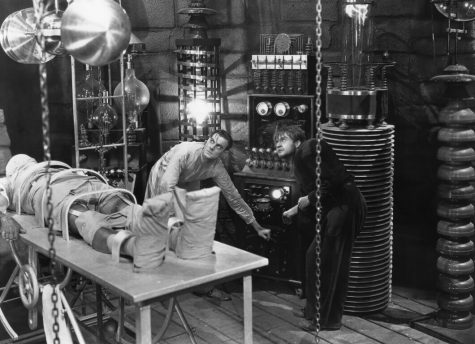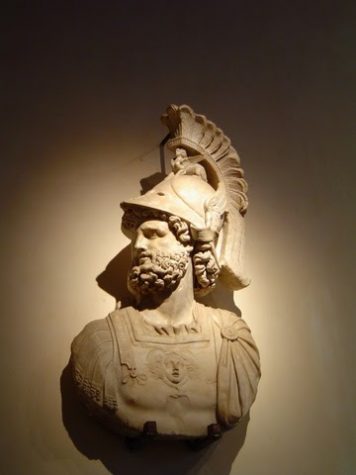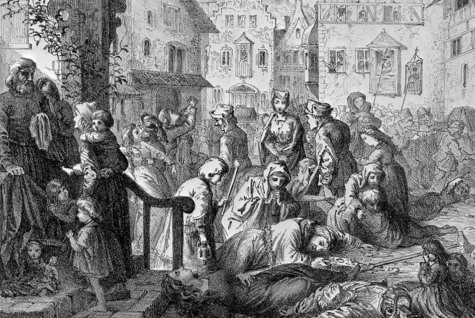How Did Roman Entertainment Structures Affect Structures Built In Other Places?
Globalization has not only influenced language, art, food and traditions but also architecture. The Romans were an advanced group of people that formed an empire two thousand years ago in the city of Rome [1]. Roman building structures can be found all over the world and has affected our modern architecture a great deal and plenty of cultures. This is evidence of globalization in europe. A place where Roman structure designs can be found currently is in sports stadiums with their oval shapes and tier seating which come from the architecture the Romans used when building large entertainment centers like amphitheaters [2]. Some sports stadiums that were built today are: the Beaver Stadium, Michigan Stadium and the Narendra Modi Stadium. How do Roman entertainment structures still influence us today?
The Gauls and the Celts are two tribes before the Romans lived and they also had entertainment. The Gauls were a Celtic tribe that lived in what is now France. At the Gauls festivals harpists, bards, and musicians were their entertainment. They also enjoyed horse racing and often had a race in their festivities. Their entertainment also included board and field games. One of these games, fidchell, looked similar to chess. The Gauls promoted field sports and hunting as ways to stay fit. The Gauls lived in cottages and villas. In their villages the big villas were built in the middle of the empire and the smaller villas were built far from the empire center.[3] They also had two types of baths. One is a sauna style and the other is one that is like a swimming pool. The celts were alive in 500 BC. And they lived in scattered villages. [4] Their houses were round and they were made out of woven wood, straw, stone and mud. So their building materials were less advanced than the building materials the Roman’s used. The Celts also built huge hill- forts that were as big as 50 football pitches.[5] Most of the Gual baths would have both types. Both the Celts and Gauls architecture was influenced by the Romans.
The Romans were well known for their architecture, and there are a lot of different important aspects of Roman architecture. Ancient Roman architecture has a lot of characteristics of Greek structures. However the Romans adapted their own ideas, styles and it soon appeared in the architecture in many other countries.[6] And made big advancements in engineering, sanitation and technology. Roman structures were very sophisticated as they were durable as well as detailed and beautiful. Their architecture is well known nowadays. Some of these reasons are: arches, domes, aqueducts, amphitheaters, baths, temples and houses. A few common features in Roman architecture are: the arches, the domes, the vaults and the use of concrete. The Romans used a lot of arches in their architecture because of the strength and durability of the arches.[7] The arches could hold a lot of weight because of the way the weight was distributed. [8] Arches can be found all over Rome. ”The Romans were the first builders in the history of architecture to realize the potential of domes for the creation of large and well-defined interior spaces.” [9] And they used domes to create high ceilings and large spaces. Rome was able to use arches, concrete and bricks to build aqueducts to provide areas that are far away from a natural water supply with clean water.
The Romans did not just advance building techniques but also building materials. [10] They were one of the first to use concrete to build and they also constructed waterways that brought a water supply into cities, so it can be used in baths and improve sanitation [11].They created concrete using volcanic ash and water. And they used the concrete for building, roads and underwater construction.Their strong concrete has helped architectures make stronger buildings and has helped that their builds to stand for hundreds of years.Something that Roman’s was known for are their roads. This is because their roads were long, wide and straight. [12] The modern cement used today is very similar to the one the the roman’s used a long time ago.[13]
The Romans amphitheaters are a great example of a unique Roman structure that was used around the world and is still used now. Just like for other constructions the Romans used Greek amphitheater designs and improved them to create their own amphitheaters. They were built from marble and were typically shaped like an oval with a central erena and had tiered seating, so they looked similar to a modern sports stadium.[14] Because of the process of globalization every town in the roman empire from Syria to Spain, and from England to Tunisia with more than a few thousand people had its own marble amphitheatre.[15] And about 230 amphitheaters can be found in the modern world that were part of the Roman empire[16].
Modern theaters, concert halls and sports stadiums structures are alike to the structure of ancient Roman amphitheaters. [17] An example of a modern sports stadium that is similar in structure is that Lambeau Field. The appearance of the lambeau field is very similar to the appearance of ancient Roman amphitheaters. They both have tier seating, have an oval shape and are both huge open air entertainment buildings. But the Lambeau field is bigger in size than a Roman amphitheater as it has a seating capacity of about 80,000 while most Roman amphitheaters had space for up to 60,000 spectators. [18] Even though their shapes are both oval the central arena of the stadium is shaped rectangular while the central arena of the amphitheater is shaped oval. Another difference is that material used to build the entertainment structures. The roman amphitheaters were built out of marble and the modern sports stadiums are built out of metal and concrete. There are some differences between ancient and modern entertainment but a lot of how to build sport structures and other entertainment locations are very similar to how they used to be built thousands of years ago.
Not just the structures of the entertainment places that are constructed these days come from the Romans but some things that we do with them are also similar. The Colosseum in Rome is an ancient Roman entertainment location. That officially opened in 80 CE. It was constructed under the direction of Emperor Vaspasian. And it was made of stone, bricks and concrete by thousands of slaves. It is the largest and most famous example with a capacity of about 50,000 viewers.[19] The main use of the Colosseum was to be used for gladiatorial contests which were armed combatants that entertained the spectators by fighting.[20] Successful gladiators became celebrities, drew in huge crowds and made a lot of riches. Sometimes battles that were even more impressive than gladiators took place and these were called Mock Sea battles. These were magnificent because they would flood the arena floor so that ships would sail in it and the ships would fight.[21] Once the fight was over they would drain it again for other events. This was possible since the colosseum was built on the site of an artificial lake. These contests took place as animal hunts, to group battles, to single combat.
In their architecture the Romans were very knowledgeable when using their space and making their structures visible and useful. The process of globalization is what brought these to lands faraway from Rome. The Romans changed a lot of the architecture through time. One aspect of building that they influenced are entertainment structures. In the past before the Romans, the Gauls and the Celts played field games and hunted as entertainment. And they used woven wood, straw, stone and mud to build their buildings. The Romans then used concrete and stones to build. They constructed large amphitheaters where they spectated hunts and plays. And today we build sports stadiums using metal and concrete. And the appearance of our modern sports stadiums are very similar to the appearance of the Roman’s amphitheaters.
[1] https://www.nationalgeographic.org/article/traces-ancient-rome-modern-world/8th-grade/
[2] https://www.ukessays.com/essays/history/roman-architecture-played-a-huge-role-history-essay.php
[3] https://en.wikipedia.org/wiki/Roman_villas_in_northwestern_Gaul
[4]http://www.primaryhomeworkhelp.co.uk/celts/index.html#:~:text=The%20Celtic%20tribes%20lived%20in,of%20wood%20from%20the%20forests.
[5] http://www.bbc.co.uk/history/interactive/animations/ironage_roundhouse/index.shtml
[6] https://www.historyforkids.net/roman-architecture.html
[7] https://www.youtube.com/watch?v=PNjGJ9aIZ7g
[8] https://www.youtube.com/watch?v=C3CGK_bipe0
[9] https://www.romanobritain.org/1-arc/arc_building_techniques.php
[10] https://www.youtube.com/watch?v=PNjGJ9aIZ7g
[11] https://www.historyforkids.net/roman-architecture.html
[12] https://www.youtube.com/watch?v=C3CGK_bipe0
[13] https://kids.britannica.com/
[14] https://www.historyforkids.net/roman-architecture.html
[15] https://www.amusingplanet.com/2015/02/4-ancient-roman-amphitheatres-still-in.html
[16] https://www.amusingplanet.com/2015/02/4-ancient-roman-amphitheatres-still-in.html
[17] https://www.britannica.com/technology/amphitheater
[18] https://www.historyforkids.net/roman-architecture.html
[19]https://www.ancient.eu/amphitheatre/#:~:text=An%20amphitheatre%20was%20a%20structure,animal%20hunts%2C%20and%20public%20executions
[20] https://theromanguy.com/italy-travel-blog/rome/why-was-the-colosseum-built








